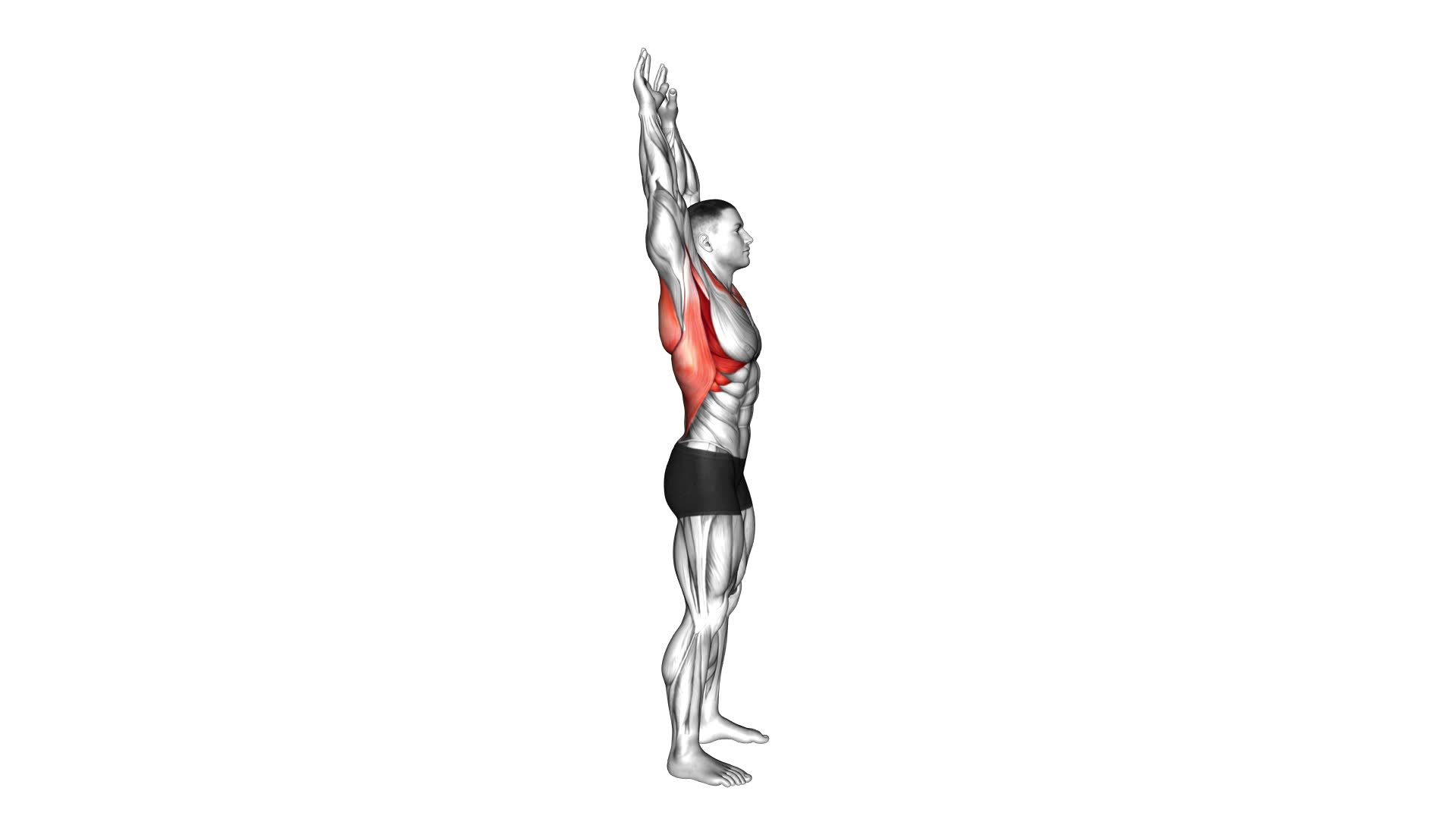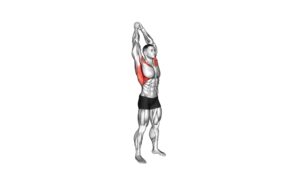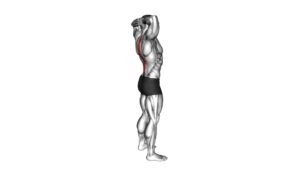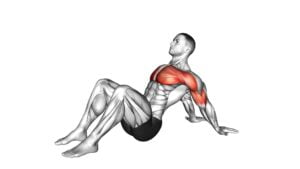Shoulder Backbend Stretch – Video Exercise Guide & Tips

Are you looking to improve your flexibility and strengthen your shoulders? Check out our Shoulder Backbend Stretch video exercise guide & tips.
Watch This Exercise Video
In this informative guide, we will show you the proper technique for the stretch, common mistakes to avoid, and modifications for different levels.
Get ready to feel the benefits of this stretch and learn how to maximize your results.
Let's get started!
Key Takeaways
- The shoulder backbend stretch increases flexibility in the shoulders.
- It releases tension and tightness in the shoulder muscles.
- The stretch improves range of motion in the shoulder joints.
- It enhances posture and alignment of the upper body.
Benefits of the Shoulder Backbend Stretch
The shoulder backbend stretch offers numerous benefits for improving flexibility and relieving tension in your upper body. By incorporating this stretch into your routine, you can experience improved flexibility in your shoulders and increased shoulder mobility.
Flexibility is essential for maintaining proper range of motion in your joints and muscles. By regularly performing the shoulder backbend stretch, you can gradually increase your shoulder flexibility, allowing for better movement and reduced risk of injury. This stretch specifically targets the muscles in your shoulders, helping to release tension and tightness that can accumulate from daily activities or exercise.
In addition to improved flexibility, the shoulder backbend stretch also enhances shoulder mobility. Your shoulders play a crucial role in many upper body movements, such as reaching, lifting, and pushing. By stretching and strengthening the muscles in your shoulders, you can increase their mobility and stability, allowing for smoother and more efficient movement.
Proper technique for the shoulder backbend stretch is vital to maximize its benefits and minimize the risk of injury. Let's now explore the correct way to perform this stretch and ensure you get the most out of it.
Proper Technique for the Shoulder Backbend Stretch
To properly perform the shoulder backbend stretch, you should begin by standing with your feet shoulder-width apart. This will provide a stable base for the exercise.
Next, interlace your fingers behind your back, ensuring that your palms are facing inward. As you inhale, lift your chest and draw your shoulder blades together, gently squeezing them. Keep your arms straight and gradually begin to lift them away from your body, allowing your head to fall back slightly.
This movement will create a deep arch in your upper back, stretching the muscles in your shoulders and improving shoulder flexibility. Hold this position for 15 to 30 seconds while breathing deeply.
To come out of the stretch, exhale and slowly release your arms, lowering them back down to your sides.
Transitioning into the subsequent section about 'common mistakes to avoid', it's important to be cautious and avoid overextending your neck or forcing the stretch.
Common Mistakes to Avoid
When performing the shoulder backbend stretch, be mindful of not overextending your neck or forcing the stretch by pushing too hard. By avoiding these common mistakes and maintaining correct form, you can effectively and safely perform this exercise. Here are some key points to keep in mind:
- Avoid overextending your neck: It's important to keep your neck in a neutral position throughout the stretch. Avoid straining or pushing your head too far back, as this can lead to discomfort or injury.
- Don't force the stretch: The shoulder backbend should be a gentle and controlled movement. Avoid pushing your body too hard or trying to go deeper into the stretch than what feels comfortable. Listen to your body and go at your own pace.
- Engage your core: To maintain stability and support during the stretch, engage your core muscles. This will help protect your lower back and maintain proper alignment.
- Keep your shoulders relaxed: Throughout the stretch, make sure to keep your shoulders relaxed and away from your ears. This will help avoid unnecessary tension and allow for a deeper stretch in your upper back and shoulders.
By following these tips and maintaining correct form, you can maximize the benefits of the shoulder backbend stretch while minimizing the risk of injury.
Now, let's explore modifications and variations for different levels.
Modifications and Variations for Different Levels
For customizing the shoulder backbend stretch to different levels, try incorporating modifications and variations.
Depending on your level of flexibility and strength, there are progression options that can help you gradually increase the intensity of the stretch.
If you're a beginner, you can start by performing the shoulder backbend stretch against a wall for added stability. This will help you maintain proper form and prevent any unnecessary strain on your shoulders.
As you become more comfortable with the stretch, you can progress to performing it on the floor or with the support of a yoga block. This will allow you to deepen the stretch and work on improving your flexibility over time.
Safety precautions should always be considered when practicing the shoulder backbend stretch. It's important to listen to your body and not push yourself beyond your limits. If you experience any pain or discomfort, it's recommended to consult with a healthcare professional before continuing with the exercise.
Additionally, be mindful of your breathing throughout the stretch to help relax your body and avoid unnecessary tension.
By incorporating modifications and variations based on your level of flexibility and strength, you can gradually progress in the shoulder backbend stretch and avoid any potential injuries.
Now, let's move on to the next section to learn some tips for getting the most out of this stretch.
Tips for Getting the Most Out of the Shoulder Backbend Stretch
To maximize the benefits of the shoulder backbend stretch, focus on maintaining proper form and engaging your core muscles throughout the exercise. Here are some tips to help you get the most out of this stretch:
- Breathing techniques during the shoulder backbend stretch:
- Inhale deeply as you lift your chest and arch your back, expanding your ribcage.
- Exhale slowly as you release the stretch and return to the starting position.
- Deep, controlled breathing can help you relax and enhance the stretch.
- Incorporating props for added support in the shoulder backbend stretch:
- Use a yoga block or a folded towel under your head for support if you have limited flexibility.
- Place a bolster or rolled-up blanket under your upper back to maintain a gentle curve in your spine.
- Props can help you ease into the stretch and provide additional stability.
Remember to listen to your body and only go as far as feels comfortable for you. It's important to avoid any sharp pain or discomfort. With consistent practice and attention to detail, the shoulder backbend stretch can help improve flexibility, release tension in the shoulders, and promote better posture.
Frequently Asked Questions
How Often Should I Do the Shoulder Backbend Stretch?
To reap the benefits of the shoulder backbend stretch, it's important to know how often to do it. Regular practice is key for improving flexibility in your shoulders and upper back.
By incorporating this stretch into your routine a few times a week, you can gradually increase your range of motion and alleviate tension in these areas.
Consistency is key, so make it a habit to include the shoulder backbend stretch in your regular exercise regimen.
Can I Do the Shoulder Backbend Stretch if I Have a Shoulder Injury?
If you have a shoulder injury, it's important to be cautious when doing the shoulder backbend stretch. Consult with a healthcare professional to determine if it's safe for you.
There may be modifications or alternative shoulder stretches that can help you stretch without aggravating your injury. Prioritize your health and listen to your body to avoid further damage.
Is It Normal to Feel Discomfort or Pain During the Shoulder Backbend Stretch?
Feeling discomfort or pain during the shoulder backbend stretch isn't uncommon. However, it's important to distinguish between discomfort and actual pain.
Discomfort can be a sign that you're stretching your muscles and increasing flexibility and mobility. If you experience pain, it's recommended to stop the exercise and consult with a healthcare professional.
To avoid injury, make sure to avoid common mistakes such as overextending the shoulders or forcing the stretch too much.
Can the Shoulder Backbend Stretch Help Improve My Posture?
The shoulder backbend stretch can indeed help improve your posture. By stretching and strengthening the muscles in your shoulders, chest, and upper back, this exercise can promote better alignment and reduce slouching.
Additionally, the shoulder backbend stretch has other benefits, such as increasing flexibility, relieving tension, and improving overall upper body mobility.
There are also variations of this stretch that you can try to target different areas and add variety to your routine.
Are There Any Precautions I Should Take Before Attempting the Shoulder Backbend Stretch?
Before attempting the shoulder backbend stretch, there are a few precautions you should take.
Firstly, make sure to warm up your body with some light stretches.
Secondly, listen to your body and only go as far as it feels comfortable. If you experience any pain or discomfort, stop immediately.
As for the benefits of the shoulder backbend stretch, it can help improve shoulder flexibility, relieve tension, and promote better posture.
Conclusion
In conclusion, the Shoulder Backbend Stretch is a beneficial exercise for improving flexibility and strength in the shoulders and upper back.
By following the proper technique and avoiding common mistakes, you can maximize the benefits of this stretch.
Additionally, modifications and variations can be made to suit different fitness levels.
Remember to listen to your body and consult with a professional if needed.
Incorporating this stretch into your routine can help you achieve better posture and overall upper body health.

Author
Years ago, the spark of my life’s passion ignited in my mind the moment I stepped into the local gym for the first time. The inaugural bead of perspiration, the initial endeavor, the very first surge of endorphins, and a sense of pride that washed over me post-workout marked the beginning of my deep-seated interest in strength sports, fitness, and sports nutrition. This very curiosity blossomed rapidly into a profound fascination, propelling me to earn a Master’s degree in Physical Education from the Academy of Physical Education in Krakow, followed by a Sports Manager diploma from the Jagiellonian University. My journey of growth led me to gain more specialized qualifications, such as being a certified personal trainer with a focus on sports dietetics, a lifeguard, and an instructor for wellness and corrective gymnastics. Theoretical knowledge paired seamlessly with practical experience, reinforcing my belief that the transformation of individuals under my guidance was also a reflection of my personal growth. This belief holds true even today. Each day, I strive to push the boundaries and explore new realms. These realms gently elevate me to greater heights. The unique combination of passion for my field and the continuous quest for growth fuels my drive to break new ground.







